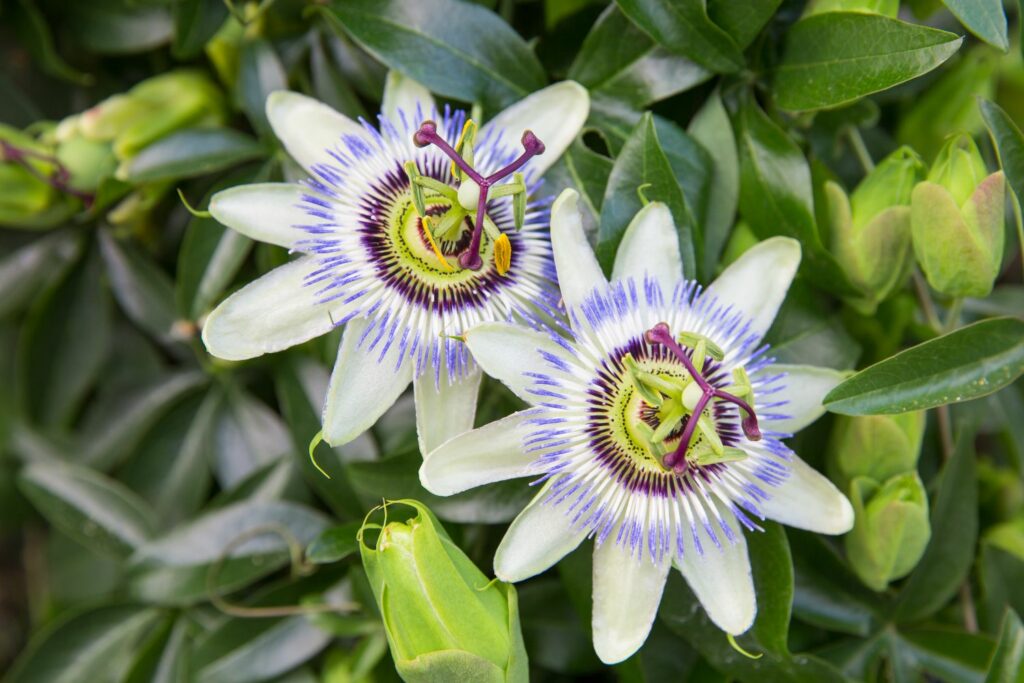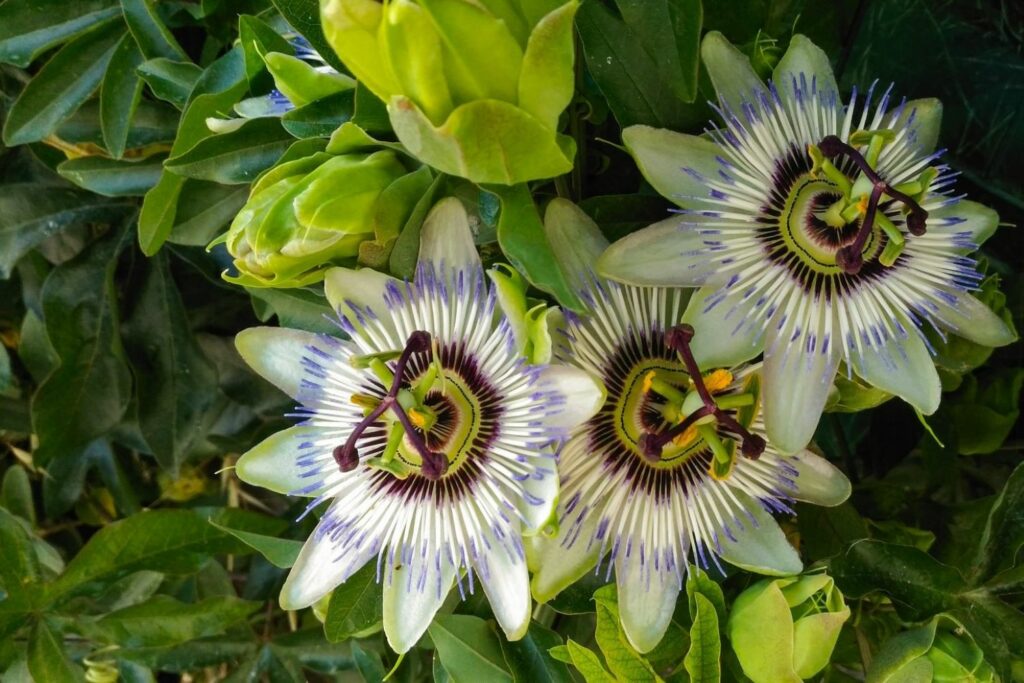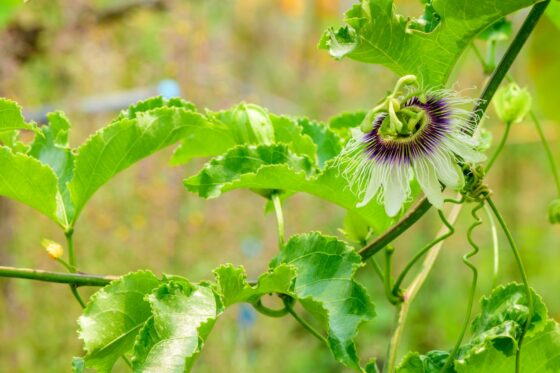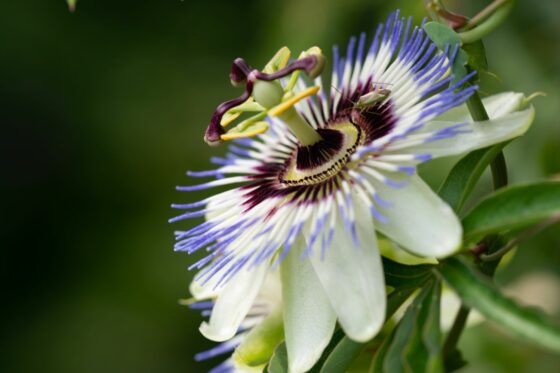Passion flower care: tips on pruning, fertilising & more
In order for the passion flower to develop its bloom, it requires proper care. Here you will learn everything about watering, pruning and fertilising passion flowers.

A healthy passion flower (Passiflora) is a true delight. Many beautiful tendrils, impressive flowers and perhaps even fruits are the reward of good care. But what does it actually take?
Contents
In general, passion flowers are very grateful companions and care is not too difficult. While there are one or two species that make some demands, caring for them is basically no problem, especially with the common species Passiflora cearulea, the blue passion flower.
Passion flower care: watering
Passion flowers like it decidedly moist but not wet. Therefore, watch for waterlogging or excess water and adjust watering to the temperature. In winter, you should reduce watering. If the plant is kept indoors permanently, it can do no harm to spray it with a portion of water that is low in lime every now and then in addition to watering. This is good for passion flower and prevents mites.
Pruning passion flowers
It does not take much to prune a passion flower properly because it is quite tolerant of pruning. However, note that you should not cut the plant during the growing season. Early spring or late autumn is the best time. Leave about 15 centimetres per shoot. More about pruning the passion flower can be found here.
How to fertilise passion flowers
Passion flower are persistently hungry – and all summer long. Fertilise the plant about every seven to fourteen days by adding liquid fertiliser to the irrigation water. Fertilising is much easier with a granular fertiliser such as our Plantura Flower Food. Due to the administration as granules, the nutrients become available only gradually, so that the plant is continuously supplied with the most important. This will save you frequent fertilising and your passion flower will still get all the nutrients it needs. However, when overwintering passion flower, when the plant is in dormancy, you do not need to fertilise.


- Perfect for flowering plants in the garden & on the balcony
- For healthier plants with beautiful & long-lasting blossoms
- Long-lasting fertiliser that is free from animal products - child & pet friendly
What to do if the passion flower does not bloom?
Anyone who owns a passion flower will naturally look forward to the beautiful large flowers. But what is the reason when the plant simply does not want to bloom? Often the reason is a lack of light or heat. Passion flowers are subtropical to tropical plants and are therefore used to a lot of warmth and light. Why not try a change of location?
Another reason could be too much fertiliser. Too much nitrogen stimulates the plant mainly to grow, but less to bloom. It is similar with a pot that is too large. The age of the plant also plays an important role. Not all passion flowers begin blooming at such a tender age as the Blue Passion flower (Passiflora cearulea). To stimulate flowering, it also helps to thin out older plants from time to time, since flowers appear only on the young shoots.
In summary, the reasons for a lack of flowering are as follows:
- Too little light
- Too cool
- Too much nitrogen fertiliser
- Too big a pot
- Too old shoots
Learn more about passion flower, its origin, purchase and hardiness, as well as details about the delicious passion fruit in our dedicated article.





















